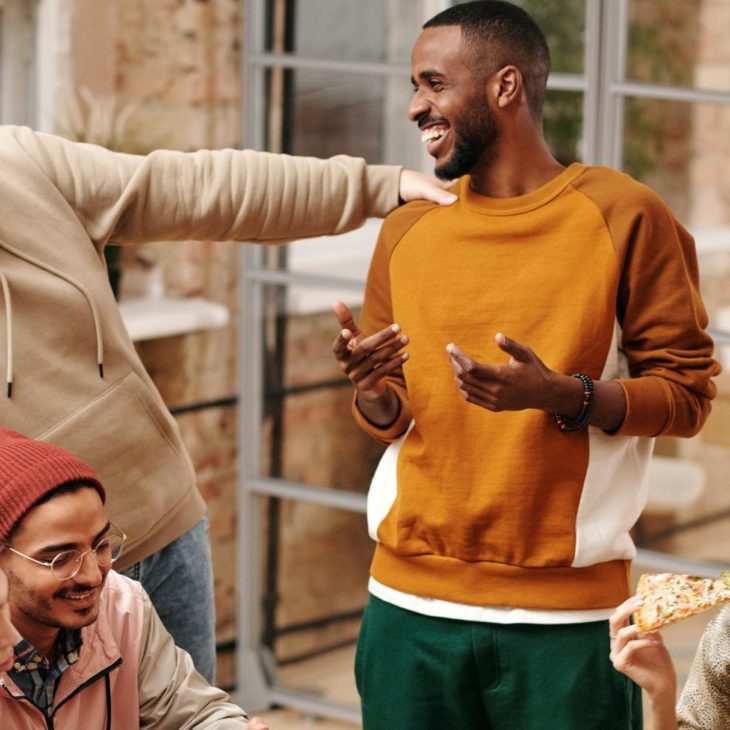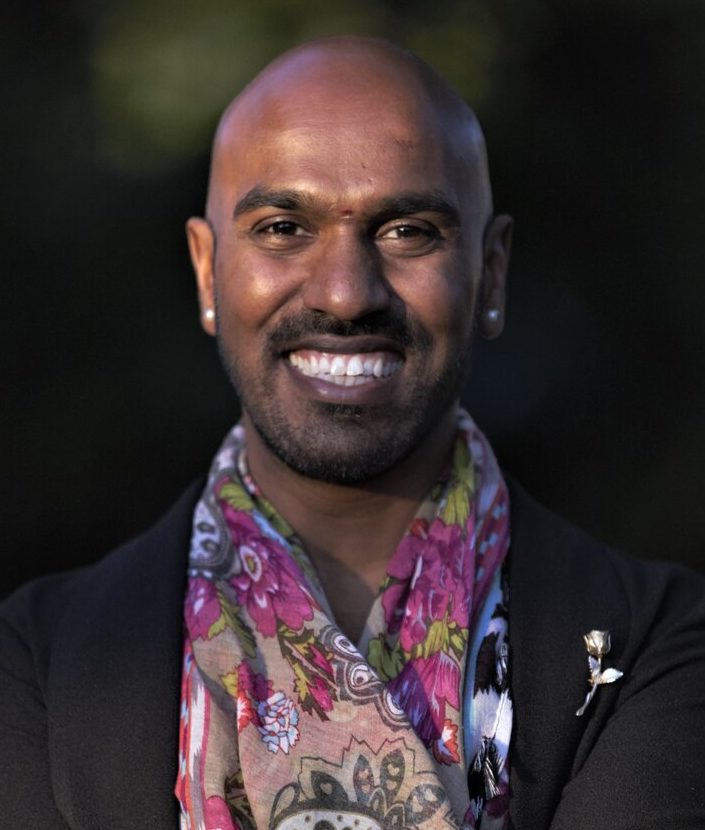It’s Hard to Talk about HIV/AIDS in Interfaith Spaces – and it’s Crucial.
June 7, 2022

Over the last few months, I’ve been able to serve as a consultant for the Interfaith America team working on HIV destigmatization, making community connections, offering context and history of HIV/AIDS activism and reengaging with my community of HIV/AIDS activists and scholars across the world.
To be honest, when I was first approached to serve in this role, I was quite nervous since I have not been directly involved in “the work” in a few years as my own professional and educational journey has taken various turns. But even at our first team meeting, I couldn’t contain how excited I was to be talking, engaging and bridging incredible people with incredible organizations. In these few months, I’ve learned that some things haven’t changed and there are other progress points that are worth celebrating.
Talk about it!
When I was working as the director of an LGBTQ campus center, I often had to navigate a tension when coordinating HIV/AIDS-related programming, support spaces or community partnerships. While I was (and continue to be) passionate about ending HIV infections and increasing access to healthcare for people living with HIV, I was cautioned by elders in the community and students that being so visible would equate HIV/AIDS with being gay. While this fear was well-intended, I was clear that if we didn’t talk about it, we would not end the disproportionate impact of this virus on our community and challenge the stigma of what it means to be a person living with HIV/AIDS.
In speaking with administrator and students from campuses that received Interfaith America grants, I heard similar echoes of what it means to talk about HIV/AIDS within interfaith and religious spaces and the fear of being labeled as other for their centering of this topic. Yet, I believe this is exactly where we need to be talking about HIV/AIDS, prevention strategies, sexual health practices, dismantling homo/bi/transphobia and also challenging stigma of what it means to be HIV positive and what it means to be a spiritual community that openly and directly centers these perspectives. As one student told me, “We need to get more people to talk about it. It’s that simple.” We need to create a shared language with our students, and colleagues that allows for people to have informed and enlightening conversations. While I enjoy an academic conference or panel (being the nerd that I am), I believe we need more informal spaces for people of all statuses to interact and cultivate community while centering the voices and experiences of people living with HIV/AIDS and engaging them in developing strategies for our organizations.
Share
Related Articles
American Civic Life
American Civic Life
Is This a Time for Bridgebuilding? 5 Leaders in Conversation
American Civic Life
As one student told me, “We need to get more people to talk about it. It’s that simple.”
Make HIV/AIDS Visible!
As a visual artist, I believe the arts have and continue to be one of the most powerful tools for HIV/AIDS education, prevention and healing. Within our spiritual spaces, how often do we bring up HIV/AIDS through art, music, poetry or other mediums? While wearing a red ribbon or displaying a panel of the AIDS Quilt for World AIDS Day is powerful, what do we do the other 364 days of the year? Do we center HIV/AIDS art in our spaces? Do we highlight HIV/AIDS scholars and poets in our heritage month programs? Do we feature HIV-positive composers in our services? I was once asked by a colleague in a spiritual life program if I wanted the HIV magazine that someone had left in their office. I told them that we already had subscriptions to that magazine and in fact it probably will be more effective in reaching someone that needs it or can learn from there than in our office. So I now often wonder, where can I take up space? Where can I ensure the needs of people living with HIV/AIDS on campus have access to material and individuals who are able to affirm their existence and foster their sense of belonging?
Cultivate Spaces for PLWH
I’ve met many young people living with HIV/AIDS (or “PLWH”) that are ashamed or afraid of sharing their status with even their close friends and family; often because they felt like they were the only one. Yet when they come to me, they are surprised that there are others on campus who are also positive and living healthy, sexy and beautiful lives. Creating space for PLWH of all ages to connect has been one of the most fulfilling things I’ve done in my career and has created friendships that continue to support and empower each other. Even if no one shows up, what does it mean to create a regular program for PLWH in our spaces of worship? Or how can we partner with local identity-based groups to foster interfaith conversations on healing, HIV/AIDS and community? What does it mean for those of us that don’t have to talk about it to make it a point to talk about it? I believe this is a key allyship/accompliceship strategy for our work.
While we have made incredible strides in the fight against HIV/AIDS in the last 40 years, there is still much work to be done, and I believe it is in these small moments and daily conversations that we can ensure there is proper education about what HIV is, how to stop its spread, and how to end stigma toward PLWH. Faith continues to be a major source of trauma and healing for many of us in this work.
How will you increase your own awareness of HIV/AIDS and ensure the needs of people living with HIV/AIDS are a part of all decisions impacting care, programming and resources? What do you need to do to learn more today?

Raja Gopal Bhattar
Raja Gopal Bhattar, Ph.D., (they/them/theirs) hails from a long lineage of Hindu spiritual leaders from the Srivaishnava tradition. They are a higher education leader, advocate, and consultant. Bhattar was a 2020 Interfaith America Racial Equity Fellow.



